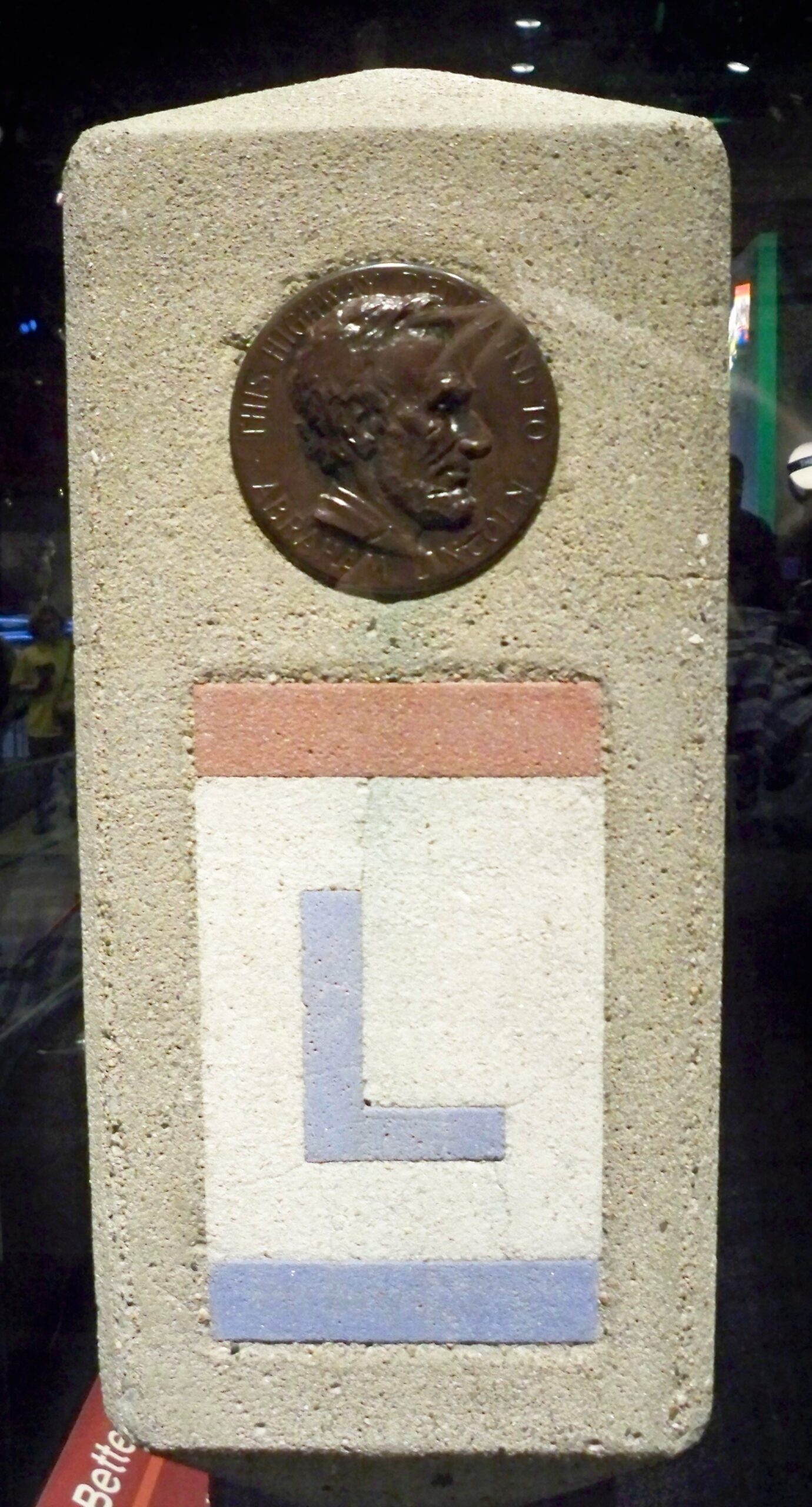Lincoln Highway
The Lincoln Highway was America’s first transcontinental highway, and it ran right through the heart of Bridger Valley. Like the pioneer trails that preceded it, the Lincoln Highway brought people, goods, and opportunity to the valley.
Conceiving a New Route
The story of the Lincoln Highway starts in 1912 when an entrepreneur from Indiana named Carl G. Fisher came up with the hair-brained idea to create a highway that ran from coast to coast. Fisher, an automotive enthusiast, wanted to facilitate the growing popularity of automobiles and improve transportation opportunities.
In conjunction with Henry B. Joy, the president of the Packard Motor Car Company, Fisher created the Lincoln Highway as a monument to Abraham Lincoln. It was officially dedicated on September 10, 1913, in Detroit, Michigan. The highway was originally a rough collection of rutted dirt roads, especially in the western United States. Even so, it extended all the way from Times Square, in New York City, to Lincoln Park in San Francisco. Over its 3,389 miles, it wound through 13 states. One of those states was Wyoming, where there was definitely little but dirt roads and trails in 1913.
Within a relatively short time, thousands of people were traveling the Lincoln Highway, which also became known as the “Main Street Across America.” As the highway took shape, local communities along the route began to improve their roads to meet the standards set by the Lincoln Highway Association. This grassroots effort helped boost regional economies and connected rural areas.

Main Street Across America
Passing through Bridger Valley

Lincoln Highway Marker
That was certainly the case in Bridger Valley. The Lincoln Highway ran right through the valley, following the general routes of earlier pioneer trails. Going westward, the Lincoln Highway passed through the town on Lyman (right down Main Street), through Urie, and on through Fort Bridger. Even today, if you follow this route, you can see old Lincoln Highway markers in a few locations.
For decades the Lincoln Highway was a symbol of the changing American landscape and the automobile age. It served as a vital corridor for commerce and tourism, connecting Bridger Valley (and all of western Wyoming) to the broader national transportation network. The highway facilitated the movement of goods and people, contributing to the economic development of towns and communities in this rural and secluded area of the country.
Transitioning to New Routes
When the US Government started numbering highways in the late 1920s, much of the original Lincoln Highway was numbered as US Route 30. Through western Wyoming, though, US 30 diverged from the Lincoln Highway, and took a northward turn at Granger (approximately 25 miles east of Bridger Valley), going toward Kemmerer and then on into Idaho. The Bridger Valley was bypassed completely as the government focused transportation dollars on the new route.
This changed when Interstate 80 was constructed in the late 1960s. As it crossed Wyoming, I-80 often followed the original route of the Lincoln Highway. At Granger, I-80 continued west, diverging from US 30 and following closer to the older Lincoln Highway route. The present-day interstate skirts along the northern edge of Bridger Valley, approximately 3 miles north of the original Lincoln Highway. The highway’s route through Bridger Valley is now known as the I-80 Business Loop. It extends from I-80 exit 34 (near Fort Bridger) on the west to exit 48 on the east. This 15-mile route has many reminders of the past and the Lincoln Highway, though some of them take an eagle eye to spot.
A Lasting Legacy
Despite the modern presence of I-80, the Lincoln Highway was instrumental in shaping the economic, cultural, and historical landscape of Bridger Valley and all of western Wyoming. Its impact on tourism, community connectivity, and regional development left a lasting legacy in the area’s history. You can quickly travel the segment of the Lincoln Highway that passed through Bridger Valley and catch glimpses of the historical significance it represents.
More to Explore
Fort Bridger
Step back into the Old West and discover a small town with an outsized effect on the westward growth of America.
Mountain View
Dubbed the Gateway to the High Uintas, Mountain View is a great place to visit and base your explorations of Bridger Valley.
Lyman
Lyman is your family destination for fun and adventure. Explore small-town America with a friendly western atmosphere.
